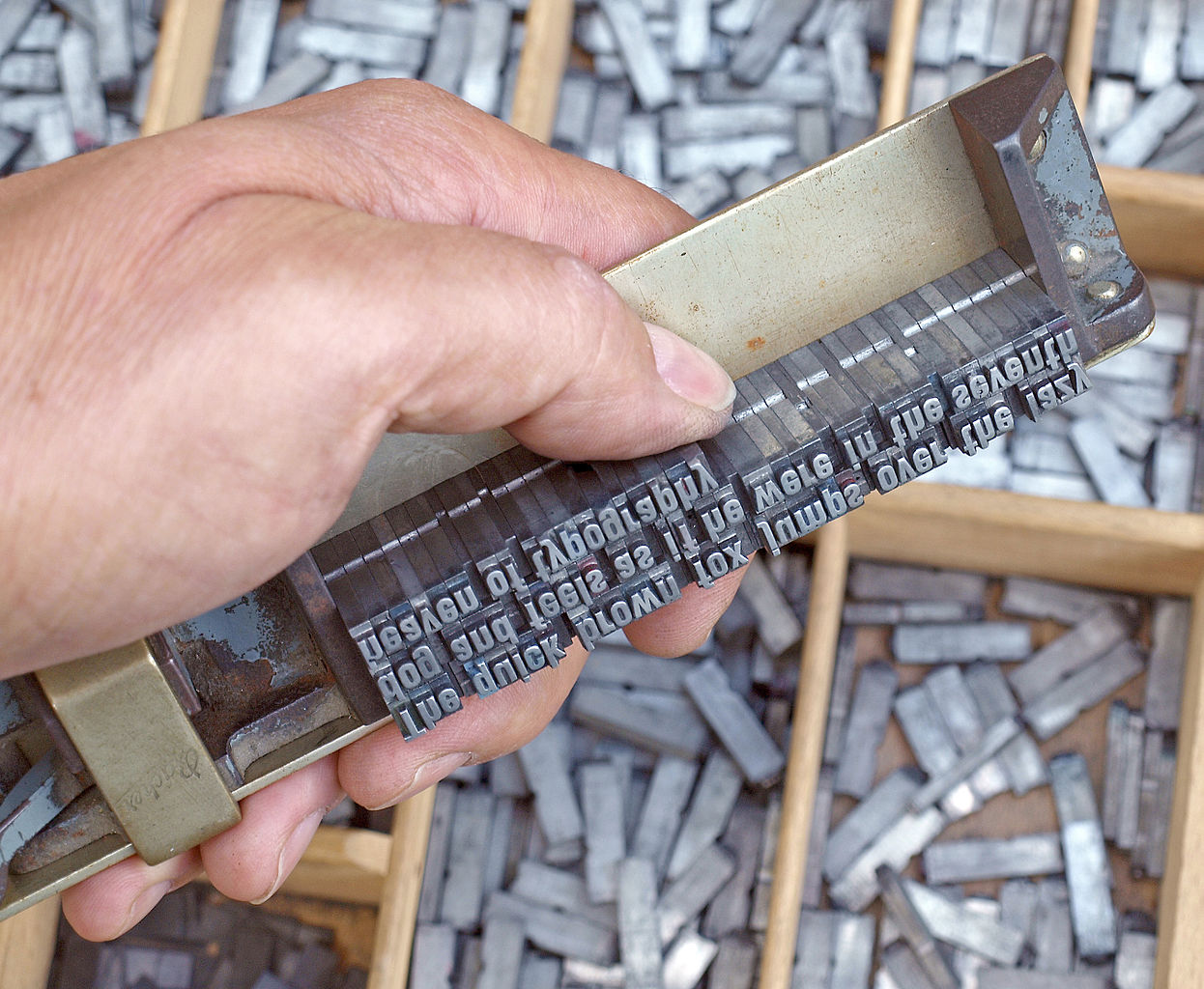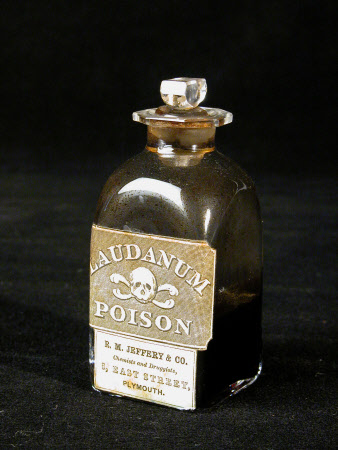Friday Fun Facts - 12/13/2013

Here are this week's Friday Fun Facts about Diana Gabaldon's books.

1) This photo, from Wikipedia, shows what moveable type slugs for an 18th-century printing press looked like. Click on the photo for a bigger view. The object in the foreground, where the letters are formed into words, is called a composing stick.
"I ha’ fought wi’ sword and dirk many times, but to every warrior comes the day when his strength will fail him.” He shook his head and stretched out a hand toward his coat, which lay on the floor.
“I took these, that day wi’ Tom Gage, to remind me of it,” he said.
He took my hand and put into it the things he had taken from his pocket. They were cool, and hard to the touch, small heavy oblongs of lead. I didn’t need to feel the incised ends to know what the letters on the type slugs were.
“Q.E.D.,” I said.
“The English took my sword and dirk away,” he said softly. His finger touched the slugs that lay in my palm. “But Tom Gage put a weapon into my hands again, and I think I shall not lay it down.”
(From VOYAGER by Diana Gabaldon, chapter 27, "Up in Flames". Copyright© 1994 by Diana Gabaldon. All rights reserved.)

The terms "upper case" and "lower case" that we use today come from the wooden cases used to hold the lead type. I took this photo in the printshop at Colonial Williamsburg in October 2013. If you look closely at the photo, you can see a diagram showing where each letter belongs in the case. (For more about my trip to Williamsburg and Yorktown, look here.)
Here are some tips for setting type by hand.

2) The photo above, from Wikipedia, shows a type of carriage known as a fiacre. (Click on the photo for a bigger view.) According to Britannica.com, a fiacre was
A French coach for hire, named for the Hôtel Saint-Fiacre, in Paris, where it was introduced in the 1640s. The first fiacres were boxlike, four-wheeled, open, hooded vehicles that were drawn by three horses and were designed to navigate the muddy Parisian streets. In 1794 about 800 were in use in Paris, and by the 19th century there were more than 1,500. The 19th-century fiacre resembled the carriages for hire used in England and the United States that were known as hackneys.
Claire was familiar with fiacres from her time in Paris:
The oncoming fiacre, ignoring Dougal’s hail, barreled past without stopping, wheels passing close enough to splash muddy water on Dougal’s silk hose and the hem of my gown.
Desisting from a volley of heartfelt Gaelic, Dougal shook a fist after the retreating coach.
(From DRAGONFLY IN AMBER by Diana Gabaldon, chapter 21, "Untimely Resurrection". Copyright© 1992 by Diana Gabaldon. All rights reserved.)
From Wikipedia:
The connection between Saint Fiacre and taxi drivers arose because the Hotel de Saint Fiacre in Paris, France, rented carriages, usually to travel to the hospice at Saint-Fiacre, Seine-et-Marne. People who had no idea who Fiacre was referred to the small hackney coaches as "Fiacre cabs", and eventually as "fiacres".

3) Sporrans come in a variety of different shapes and sizes. This is a Jacobite sporran, circa 1745, made of leather and brass. (Photos by houseoflabhran.com.)
Jamie picked up his sporran and began tucking in the loose bits of things that had come out when he pulled out the pearls. Finding a tangled length of fishing line, he upended the bag over the bed, dumping everything in a pile. He began to sort through it, painstakingly winding up the bits of line and string, finding loose fish hooks and firmly re-imbedding them in the piece of cork where they normally rested.
(From OUTLANDER by Diana Gabaldon, chapter 31, "Quarter Day". Copyright© 1991 by Diana Gabaldon. All rights reserved.)

This is a badger-skin sporran, used by the Argyll and Sutherland Highlanders regiment during the First World War.
Here's an article about a 2009 law banning the use of sealskin sporrans in the European Union. For more about sporrans, look here and here.

4) The photo above shows a laudanum bottle, circa 1740-1800, from the collection of a National Trust museum in Plymouth, UK.
[Jamie] lifted the cup and poked a long nose reluctantly over the rim, nostrils twitching at the sickly-sweet scent. He let the dark liquid touch the end of his tongue and made a face.
“It will make me sick.”
“It will make you sleep."
"It gives me terrible dreams.”
“As long as you don’t chase rabbits in your sleep, it won’t matter,” I assured him. He laughed despite himself, but had one final try.
“It tastes like the stuff ye scrape out of horses’ hooves.”
“And when was the last time you licked a horse’s hoof?” I demanded, hands on my hips. I gave him a medium-intensity glare, suitable for the intimidation of petty bureaucrats and low-level army officials.
He sighed. “Ye mean it, aye?”
“I do.”
“All right, then.” With a reproachful look of long-suffering resignation, he threw back his head and tossed the contents of the cup down in one gulp.
(From AN ECHO IN THE BONE by Diana Gabaldon, chapter 62, "One Just Man". Copyright© 2009 by Diana Gabaldon. All rights reserved.)
Laudanum is a tincture of opium, often mixed with alcohol. From Wikipedia:
[Laudanum] is reddish-brown in color and tastes extremely bitter. Laudanum contains almost all of the opium alkaloids, including morphine and codeine. A potent narcotic by virtue of its high morphine concentration, laudanum was historically used to treat a variety of ailments, but its principal use was as an analgesic and cough suppressant. Until the early 20th century, laudanum was sold without a prescription and was a constituent of many patent medicines.
For more about the use of laudanum in the 18th and 19th centuries, look here and here.

5) This is an 18th-century automaton called "The Writer", created by a Swiss watchmaker named Pierre Jaquet-Droz. (Photo credit: puppetmister, on Flickr.) It reminds me very much of the one Lord John encountered in BROTHERHOOD OF THE BLADE:
"It's all right." Hal was still cross, but his voice showed a tinge of amusement. "It's only an automaton."
This was by now apparent; the cabinet contained a life-size figure, or rather half of one; the thing ended at the waist, the bottom half of the cabinet presumably being filled with the clockwork mechanism whose whirring had attracted Grey's attention. Going closer to examine this object, he discovered the figure to be made of wax, wood, and metal, gaily painted to resemble the popular conception of a native of India, complete to kohl-rimmed eyes, red lips, and gauzy turban.
He put out a hand to touch it, then jerked the hand back as a loud clank came from the machine. The figure leaned abruptly toward him in sinister fashion, but proved only to be inserting a stiff hand into a jar placed before it. More clanking and whirring, a long pause...and the figure snapped back into its original position, one arm swinging up so violently that it nearly struck Grey in the face.
(From LORD JOHN AND THE BROTHERHOOD OF THE BLADE by Diana Gabaldon, chapter 9, "Unnatural Acts". Copyright© 2007 by Diana Gabaldon. All rights reserved.)
Here's a video showing "The Writer" in action:
I think it's fascinating, and I'm amazed that it still works, well over 200 years after its creation!
I hope you enjoyed these Friday Fun Facts! Look here to see all of my Friday Fun Facts blog posts, and please come back next week for more!







Terrific Video!
Patti - Thank you so much for the kind words! :-)
Karen